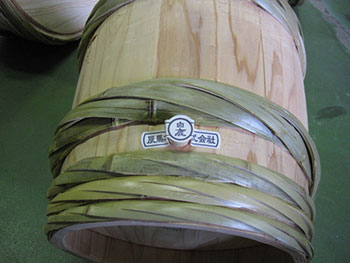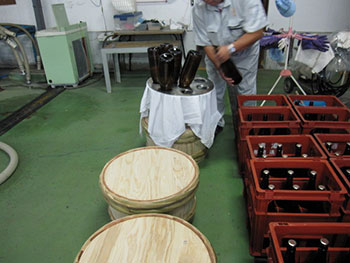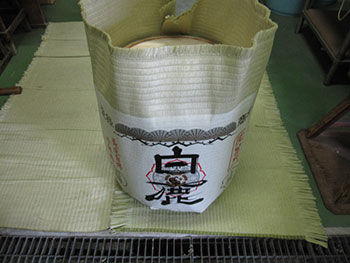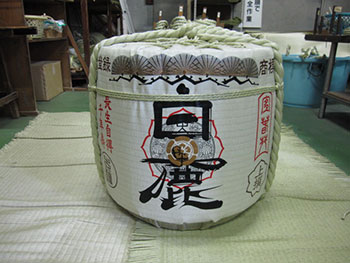Taru-zume sagyo
- 【English】
- Casking
- 【Japanese】
- 樽詰作業
The process of filling a taru of Japanese cedar wood, then wrapping in it a woven straw komo mat printed with a brand name, before binding the whole with cords to complete the cask.
It comprises the following tasks.
- There is a wooden plug in the opening for sake towards the bottom of the cask. The logo or brand name is branded or stamped on its upper side.
- Half-fill the cask with cold or hot water, and leave for a while to check for leaks. Use the water to wash thoroughly, then put it upside down on a stand to drain completely.
- Pour in the necessary quantity of sake through the hole in the top lid (called kagami (鏡)), check again for leaks, then seal the hole with a label bearing the brand name.
- Carefully wrap a komo mat printed with brand name and logo around the cask, and bind it with cords. At this point, it is considered to be a completely prepared komo-kamuri daru (komo-wrapped cask) . This process of preparation is also called hon-ni-zukuri (本荷造り, “full preparation for shipping”).
A cask which has had a label applied directly (without having the decorative/protective komo wrapping) is called kari-maki (仮巻き, “provisionally wrapped”) or simply hadaka ( 裸, “bare”).

taruzume sagyo1

taruzume sagyo2

taruzume sagyo3

taruzume sagyo4

